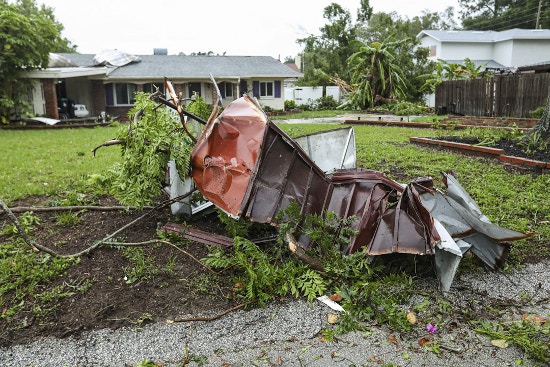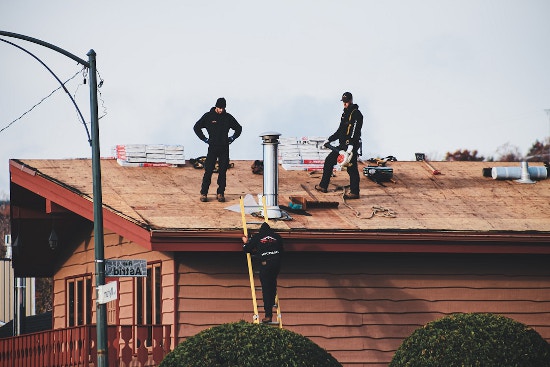Inclement weather can wreak havoc on your home, and the consequences can be catastrophic. To minimize its effects and ensure safety and a quick recovery process, it is important to know what steps should be taken to reduce them effectively and quickly. From insurance claims to storm damage repair service, the process includes several important stages that homeowners must navigate. In this article, we’ll explain the essential steps to take after a storm causes damage to your property.
Assessing the Extent of Storm Damage to Your Property


After the storm has passed, it is important to assess the damage as quickly as possible but with caution because any invisible threats may still be present. Look for visible signs like broken windows, damaged roofs, and fallen trees. Safety is paramount; if damage seems severe, seek professional assistance before entering your property.
Photograph the damage extensively for insurance claims, capturing details from various angles. Inspect less obvious areas like the foundation, plumbing, electrical, and appliances for damage. Failure to do so may result in costly repairs that require immediate assistance from emergency services. Once this is done, ensure the safety of the structure before proceeding.
Ensuring Safety and Preventing Further Home Damage Post-Storm
As soon as you assess the damage to your property, your immediate focus should be on stabilizing it to prevent further damage. This may include covering broken windows with tarps or plywood and shutting off utilities if tampering with water, gas, or electrical lines is suspected to avoid additional hazards such as fire and flooding.
If any areas are exposed to the elements, take immediate steps to protect them from further internal and structural damage. Protecting damaged roofs from water ingress is extremely important to avoid additional internal and structural problems. Seek out professionals offering awning repair in Highlands Ranch for specialized damage like impaired awnings. Their expertise ensures high-quality repairs that withstand future weather challenges.
In some instances, local authorities or disaster relief services may offer assistance with securing property. Keep an ear out for such announcements and don’t hesitate to seek help from your community. Short-term fixes can make a significant difference, but always prioritize safety above all else.
Navigating Insurance Claims for Storm Damage to Your Home
Following a storm, dealing with insurance claims for repairs is crucial. Start by reviewing your policy to understand coverage details. Contact your insurer to clarify any uncertainties and begin the claims process promptly.
Submit a comprehensive claim with documentation from your initial damage assessment. Keep records of all correspondence and follow up regularly to ensure timely processing.
Expect an adjuster to assess the damage and estimate repair costs. Cooperate with them and have your documentation ready for reference. Ask questions if their conclusions seem unclear.
Avoid quick-fix contractors offering unrealistically low costs. Opt for reputable, licensed professionals for repairs. Your insurer may recommend trusted contractors, or consider using a reputable storm damage repair service.
Professional Services for Repair and Restoration of Storm-Damaged Homes


Ensuring your home is properly repaired and restored after storm damage is vital for safety and longevity. Hiring reputable contractors specialized in storm damage is key. Focus on critical repairs like structural integrity, roofing, and waterproofing first. Look for professionals who offer guarantees on their work for lasting reliability.
For interior repairs like water damage and electrical fixes, choose skilled tradespeople promptly. Verify that contractors are licensed, and insured, and provide references for peace of mind. Transparency about qualifications is crucial when trusting someone with your home.
Long-Term Measures to Protect Your Home Against Future Storms
When you repair your home after a hurricane, it’s essential to strengthen its resiliency against future weather events. Address any structural weaknesses discovered during the storm, install storm shutters, reinforce garage doors, and use wind/impact-resistant roofing material if available.
Landscape design decisions also matter; Choose native plants and trees that can withstand the local climate extremes, and be proactive in tree maintenance to prevent any potential damage to fallen limbs. For flood-prone areas, elevate electrical systems, install sump pumps, and explore flood barriers to minimize water damage risks. These improvements can significantly bolster your home’s ability to withstand storms in the future.
Overall, recovering from storm damage demands patience, meticulous planning, and attention to detail across various fronts. Assessing and preventing additional damage, adeptly managing insurance claims, and engaging professional repair services are crucial steps for swift and thorough home recovery. Implementing long-term protective measures further fortifies your property against future storms, minimizing their impact.
























